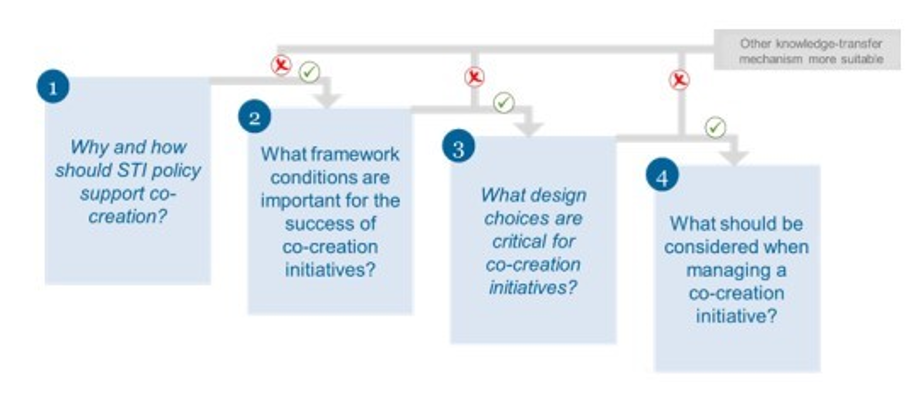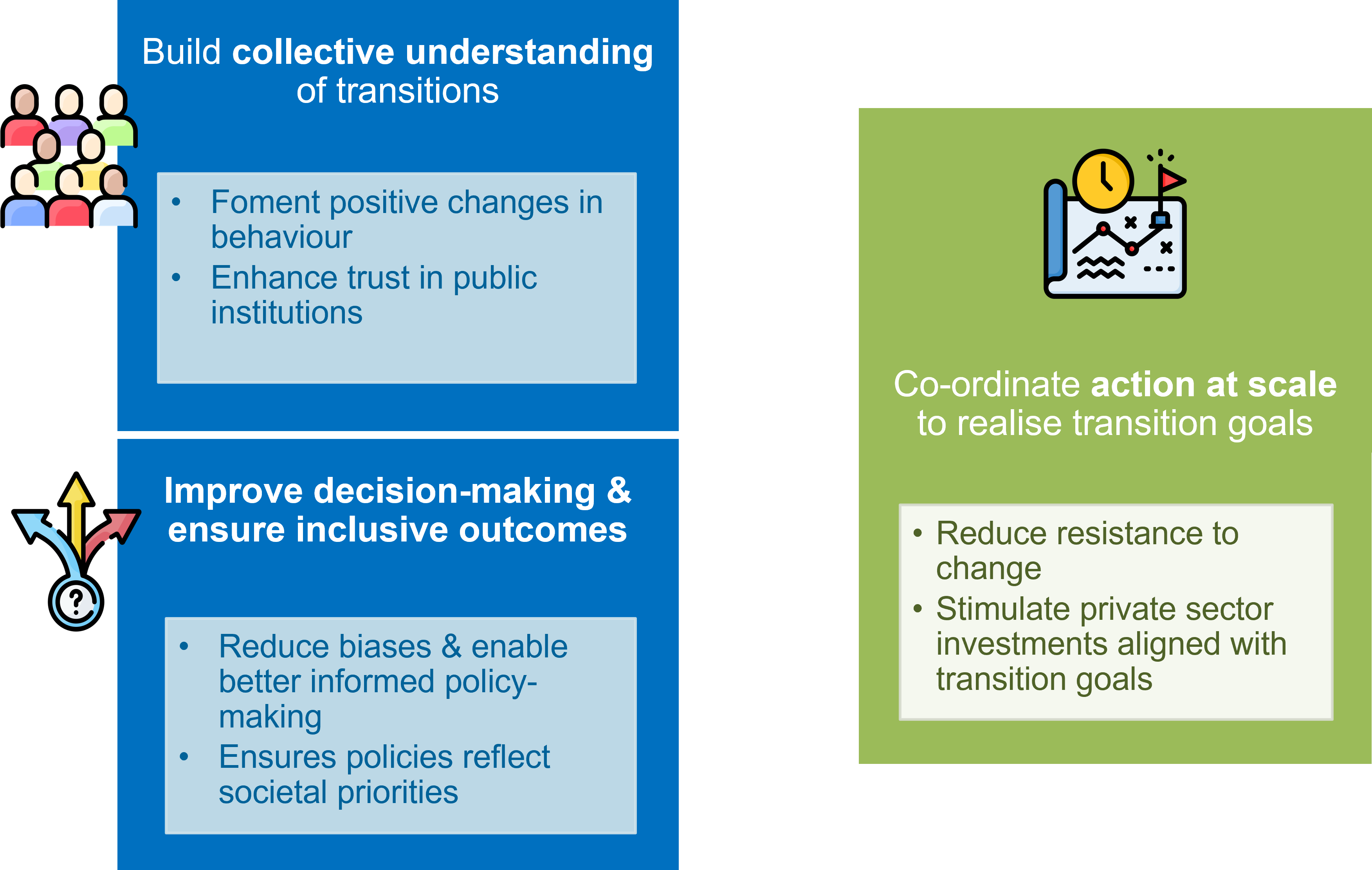While funding remains an important mechanism to stimulate and enable co-creation, policies would benefit from capitalising on these incentives to stimulate co-creation to address a wide range of pressing societal challenges, such as climate change, food supply chain disruptions and the energy transition. Co-creation programmes that are purpose-driven and pursue missions that serve societal goals, go in this direction.
Partnerships for science and innovation
The importance of partnerships or co-creation – the joint production of innovation between industry, research and possibly other stakeholders, such as civil society – has been increasingly acknowledged. These co-creation initiatives can take different forms, such as projects, mechanisms or diverse institutional arrangements ranging from joint laboratories to industry-led innovation ecosystems.

Key messages
The public sector plays a number of roles in partnership activities, including that of network builder and negotiator, legitimiser and collaborator. In particular, governments’ linkages with both research and industry put them in a unique position for rapidly connecting potential co-creation partners, with expertise in different science and technology fields and sectors.
The COVID-19 crisis made evident that the active engagement of users in (some phases of) co-creation projects is essential for uptake. This was well illustrated by the uptake of COVID-19 vaccines and other medical products for which assuring citizens and getting their endorsement was essential.
Diverse disciplinary expertise and knowledge are needed to address green transition challenges as technology-based solutions to the complex challenges rely on research and innovation capacities at the frontier of knowledge. They often also emerge from new combinations of diverse knowledge and the collaboration of experts from various fields spanning social sciences to STEM disciplines. Entrepreneurial know-how from the private sector is another key ingredient to developing innovations at scale.
Co-creation initiatives stand a greater chance of success if applied to national priority fields. Favourable framework conditions, including labour policies that allow for mobility across public research institutions and industry will also affect the success of co-creation initiatives. At the same time, design considerations for co-creation initiatives need to consider whether to involve an intermediary institution, create dedicated co-creation spaces, and how to select the type of initiative and the develop suitable governance models.
Context
Key conditions for successful partnerships
The figure describes the four key conditions at macro and micro levels needed for their success.

Why is it important to engage citizens in partnerships?
The figure illustrates the ways in which citizens play important roles in partnerships aimed at addressing socio-economic challenges and in support of transitions.

Related publications
-
 Working paper12 November 2024
Working paper12 November 2024 -
 18 July 2023
18 July 2023
Related policy issues
-
There is growing interest in citizen science and engagement to improve research efficiency and relevance, as well as to enhance trust in science.Learn more
-
Science is inherently international. Researchers and research institutions co-operate with each other across national borders and a high proportion of scientific publications include co-authors from different countries. Maintaining a well-functioning international research ecosystem is an important focus for science policy.Learn more
-
There is fierce international competition for scientific talent, and building and maintaining a productive and inclusive research workforce is a major challenge for science policymakers.Learn more
-
Research Infrastructures (RIs) play a key role in enabling and developing research in all scientific domains. Optimising their organisation, sustainability and impact has become of prime importance for research funders and decision-makers.Learn more
-
The research workforce is not representative of the diversity of societies as a whole. Whilst the pattern differs across disciplines, countries and employers, the overall picture is that women tend to be under-represented and are confronted with a glass-ceiling that blocks them from acceding to higher grade positions. The situation is even worse for a number of other groups. Factors such as socio-economic and ethnic backgrounds have a major influence on decisions to enter and persevere in research.Learn more



